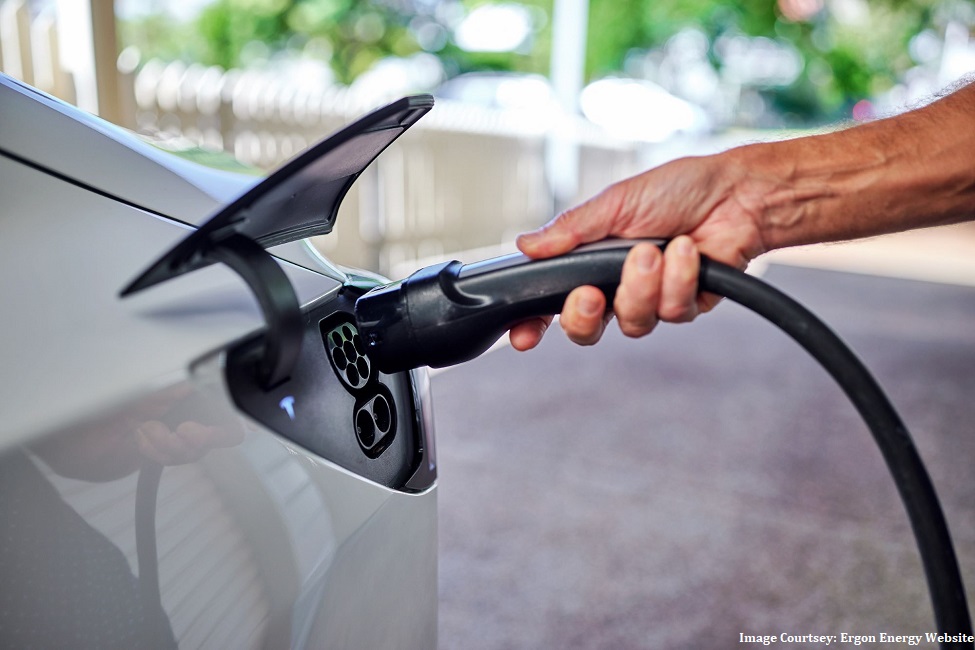
Demystifying Charging Methods: A Beginner's Guide to Understanding Level-1, Level-2, and Level-3, along with the Diverse Charging Connectors
There are three distinct levels or methods of charging, categorized as level-1, level-2, and level-3, arranged in descending order based on charging time. Additionally, diverse connectors are employed by manufacturers across various regions worldwide.
When it comes to electric vehicle charging, we frequently encounter terms like AC charging and DC fast charging, where the clear distinction lies in the time required to re charge the vehicle, with DC fast charging being the quickest and AC taking comparatively more time. Recognizing that the charging process is a crucial facet of the electric vehicle ownership journey, it becomes imperative to delve into the nuances of these charging methods and levels. By comprehending their distinctions, users can tailor their preferences to factors such as speed, cost, and convenience, optimizing their electric driving experience. Moreover, the selection of an appropriate charging method can help extend the service life of a battery pack. The charging process encompasses three levels – Level-1, Level-2, and Level-3 – arranged in descending order based on charging time. The level of charging is determined by the charging rate and the time it takes to charge the battery pack, in addition to the utilization of distinct hardware.
AC vs. DC Current
Before delving into the different levels of charging, it is important to understand that the electric current which is a flow of charged particles can flow in multiple directions in a wire. The direction of this current determines the two types: alternating current (AC) and direct current (DC). AC current is bi-directional which changes direction periodically with a set frequency varying across different geographic regions. This frequency denotes how often the current changes direction; for instance, AC current at 50Hz changes direction 50 times per second along the wire or a conductor. The electric current from the grid is AC which powers our homes, and offices. On the other hand, DC current flows in one direction. Current from batteries is DC current that powers all portable electronic devices such as smartphones, tablets.
Level-1 Charging
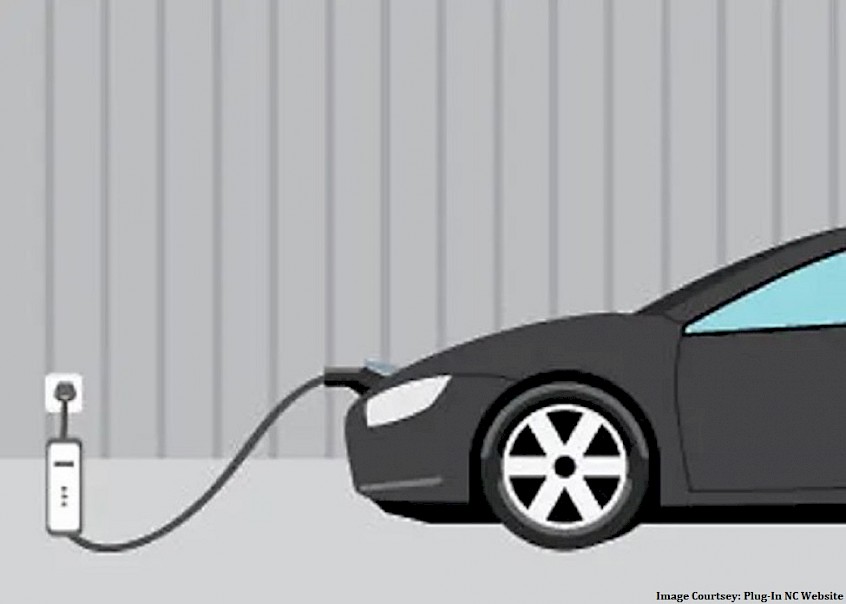
Level-1 Charging1
Level-1 charging involves utilizing a 15A, three-pin socket at 120V/230V (depending on geographic location), representing the slowest charging option. Level-1 charging resembles the process of charging a smartphone: users plug one end of the charging cable into the three-pin, 15A socket, and the other end into the car's charger port to charge. Depending on the manufacturer, a portable cable comes with the purchase. When the charging cable connects to the charging port, the power from the plug activates the on-board charger, converting AC power from the grid into DC power to charge the battery pack. Operating at speeds of 1-2kW, it adds approximately 4-5 kilometers (roughly 3 miles) per hour. Level-1 charging is most suited for scenarios where users cover shorter distances, typically under 30 miles (48 km) a day, and charging speed is of lesser concern.
Level-2 Charging
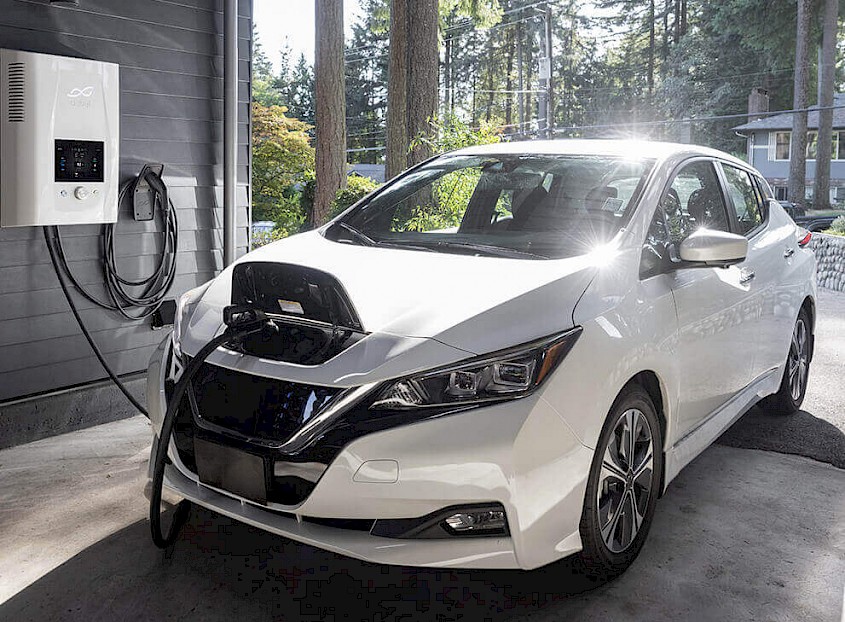
Level-2 Charging
Level-2 charging involves utilizing a home-installed wall box, providing a charging speed ranging from 3kW to 22kW, varying across manufacturers and models. Charging more swiftly than a standard three-pin socket, Level-2 benefits from higher charging speeds and increased voltage, typically at 240V. Similar to Level-1 charging, the AC current from the grid is converted to DC through an on-board charger to recharge the battery pack. While the installation of a Level-2 charger is usually pricier, requiring a 240V outlet and the wall box unit, its higher voltage and faster charging rates translate to a reduced charging time compared to Level-1 charging. This makes it an attractive choice for users seeking faster charging, particularly those who cover daily distances exceeding 30 miles (48 km). However, its installation can be considered regardless of daily mileage, especially for individuals looking to alleviate concerns pertaining to range anxiety and charging time.
Level-3 Charging

Level-3 Charging2
Level-3, commonly known as DC fast charging, stands as the swiftest among the charging levels, boasting rates exceeding 30kW. Easily recognizable as a free-standing unit at charging stations along highways to facilitate long distance travelling. The DC fast charger converts AC current from the grid into DC current within charging unit before the car draws power from the unit. The longer charging times for Level-1 and Level-2 are attributed to factors such as charging speeds, voltage disparities, and the notable distinction that Level-3 charging bypasses the on-board charger responsible for converting AC current from the grid to DC current. Despite its shorter charging duration, it is advised to use a level-3 charger only when travelling long distances or in emergency situations as it accelerates cell degradation due to dendrite growth. The growth of dendrites, small pointy protrusions on the anode, occurs at high charging rates and contributes to capacity loss and reduced range as it uses lithium, an active material of the cells. When using a DC fast charger, it is always recommended to use the preconditioning feature before reaching the charging station which essentially warms up the battery pack to the right temperature to enable faster charge rates and shorter charging times.

Lithium-ion Dendrite Growth3
The charging curve, a graph illustrating the charging rate vs. State of Charge (SoC), shows a smoother trajectory in Level-1 and Level-2 charging, in contrast to Level-3 charging where the charging speed ramps up at the start of the charging session. The car maintains a consistent rate deep into the curve before ramping down as the SoC increases. Nonetheless, on a Level-3 charger, the charging curve is not as flat compared to Level-1 and Level-2 charging. For instance, the Hyundai Ioniq 5 with a claimed charging speed of 350kW on a 350kW DC fast charger will not charge at a constant rate of 350kW from 0-100% SoC. Like level-1 and level-2 charging, the charging speed will ramp up going into the charging session initially before reaching the peak speed. Once the peak speed is reached, it may hold the speed for some time depending on the SoC, cell temperature, and voltage before ramping down the speed as the SoC increases. The speed decreases significantly once the SoC reaches 80%, up to which the charging is the fastest. Due to the decrease in speed, it takes longer to get from 80-100% compared to getting from 0-80% SoC. This is one of the reasons why manufacturers state 0-80% or 10-80% times on a DC fast charger.

Charging Curve: Power (kW) vs. State of Charge (SoC)4
During charging, lithium ions travel from the cathode to the anode where they intercalate within the graphite lattice. This is similar to entering a movie theatre with unassigned seats; the first few people entering the theatre will find spots more easily compared to people who would enter the theatre when 70-80% of seats are occupied. Similarly, lithium ions take a lot more time to intercalate within the lattice when the SoC reaches 80%. Even more reason to refrain from charging the battery pack to 100% using a Level-3 charger when the State of Charge (SoC) is already above 80%, particularly when reaching your destination is feasible. This ensures that the charger is not unnecessarily occupied when someone in greater need wishes to use it. Besides, 80% SoC for daily driving will be more than sufficient in most use cases.
Vehicle-to-Vehicle Charging (V2V)
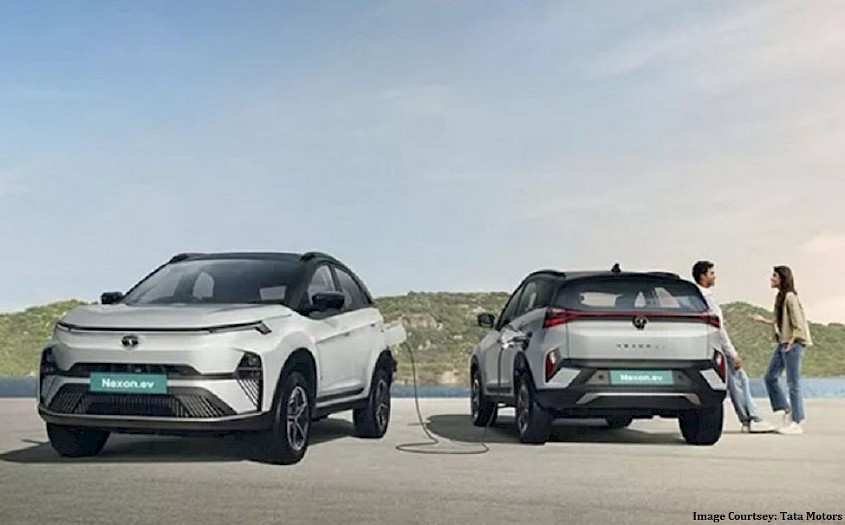
V2V Charging5
Vehicle-to-Vehicle (V2V) charging is the ability to use one electric vehicle (EV) to charge another EV. This can prove to be especially valuable in emergency situations where one car needs a boost to reach the nearest charging station. Speeds of V2V charging vary among different vehicles and are typically on par with Level-1 and Level-2 charging, contingent on the specific make and model. Prime examples supporting V2V charging include the Hyundai Ioniq 5, Tata Nexon.ev, Lucid Air, and Ford F-150 Lightning.
Charging Connectors
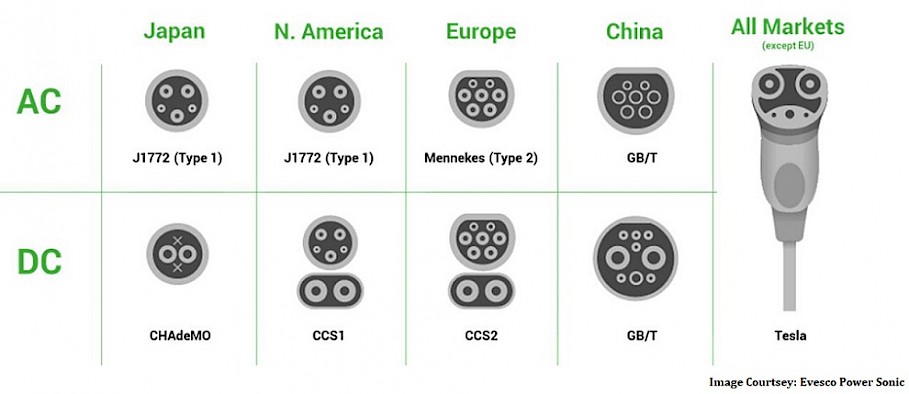
Charging Connectors6
In addition to various charging levels, diverse connectors are utilized, varying across geographic regions and manufacturers. The most popular ones are the following CHAdeMO (Charge on the move) for DC fast charging paired with J1772 for AC charging, CCS Type-1 (Combined Charging System) for DC fast chargers paired with J1772 for AC charging, CCS Type-2 paired with Mennekes for AC charging, and lastly NACS (North American Charging Standard) or popularly known as the Tesla connector. The CHAdeMO connectors are mainly found in Japan, however early Nissan Leafs in the US had a CHAdeMO connector, and some charging stations do have this connector. In later years, most manufacturers in the US adopted CCS-1 connectors as did most manufacturers such as GM, Ford, Hyundai, Kia, Volkswagen Group, Mercedes-Benz, BMW, and even Nissan. The CCS-1 or Type-1 connector is mainly used in the North American market and is the popularly used at non-Tesla DC fast chargers such as Electrify America and EVgo.
Concerns about the reliability of many non-Tesla DC fast chargers prompted several manufacturers, including Subaru, Hyundai, Kia, Volkswagen Group, and GM to adopt the NACS connector which will enable non-Tesla owners to use Tesla’s Superchargers. The NACS port is the Tesla connector found on all Teslas in North America, and the Model S and Model X in Europe; the Model 3 and Model Y use the CCS-2 connectors in Europe. The talking point of the NACS connector is the same connector for both AC and DC fast charging unlike the CCS connectors or CHAdeMO. Tesla superchargers have proven to be the most reliable and the widest network amongst charging stations. Lastly, the CCS-2 or Type 2 connectors are found in cars in Europe, Australia, and India. The CCS-2 connector is for DC fast charging and Mennekes connector for AC fast charging. Tata Nexon.ev, Tata Punch.ev, MG ZS EV, and Mahindra XUV400 in India all use type 2 connectors.
Image Courtsey
Thumbnail and Title Image: Ergon Energy
1Level-1 Charging: Plug-In NC
2Level-3 Charging: Tesla
3Dendrites: QuantumScape
4Charging Curve: Reddit r/teslamotors
5V2V Charging: Tata Motors
6Charging Connectors: Evesco Power Sonic Group
For any inquiries or suggestions regarding the content, please feel free to reach out to us at jash@evlane.net

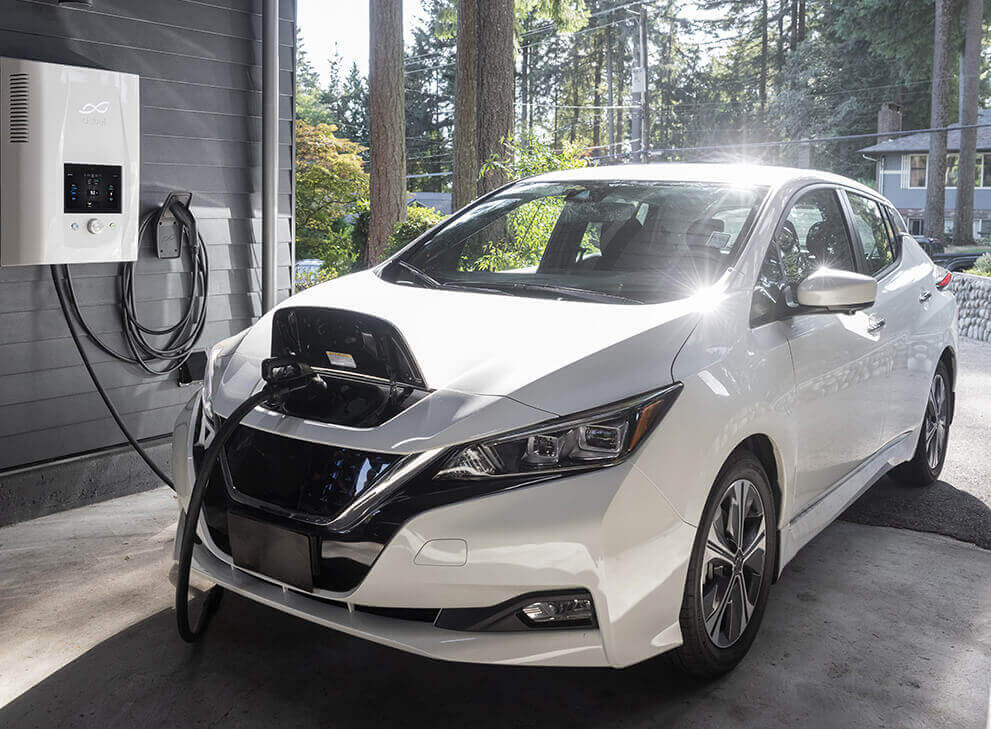

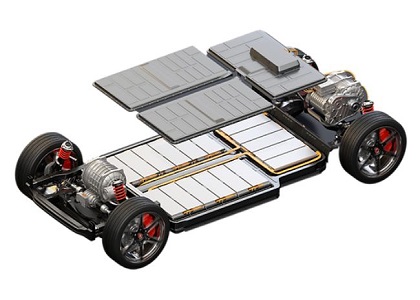
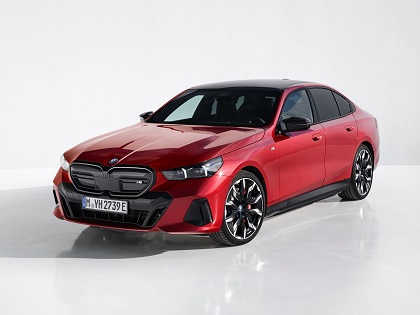
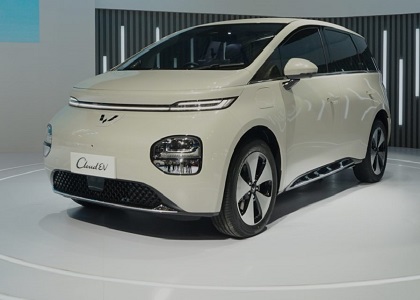
February 23, 2024
Category: